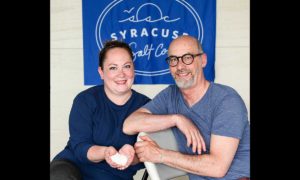In the two years that I have been writing this column, various people have said to me, “Cheryl, where’s your proof that these sightings are really alien space crafts?” My answer can only be, “I have none.”
Of course this raises the question: “Does this make my weekly reporting of other people’s sightings moot?” My answer is, “Not in the least.” I’m simply reporting the news that other people have reported. I can’t confirm or deny the facts of their sightings; I can only share their accounts with you. Before we dismiss these eye witness reports as pure hooey, we need to consider that in courts of law all over our beloved New York State, eye witness testimonies are highly regarded.
North America has about 400 UFO sightings a month, or approximately 4800 a year. On an average month, New York State residents report about 40 UFO sightings, or about 500 per year.
Experts and experienced investigators will say that only a tiny percentage of sighting reports are hoaxes or delusional people. Some sightings turn out to be natural phenomena and others are simple misidentification of other things. On the other hand there is the rather large body of sightings that just can’t be explained. Ultra conservative numbers say it’s about 3 percent. The experts I’ve spoken with said the number of unexplained sightings sits in the 10 – 20 percent range.
What should also be pointed out is that many experts in the field of UFO investigation say many reports of unusual aerial phenomena are made by trained observers, pilots and law enforcement officers. Yet the question of proof, like a broken record, keeps coming back and that, as they say, is “the rub!”
In the scientific world, to validate a piece of scientific information, it must be evaluated. The commonly-accepted scholarly process can be one or all of the following:
- The research material articles can be published in academic peer-reviewed journals.
- Or published in official government agency reports and journals.
- Or get validation by some independent Scholarly Institution. In numerous countries that is done by a National Academy of Sciences or various non-profit research organizations.
- Lastly, in the pre-internet world, traditional, major and respected newspapers were considered reliable.










